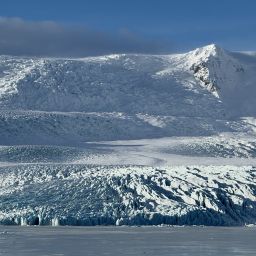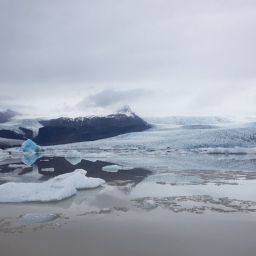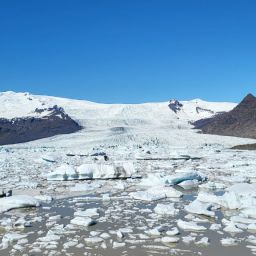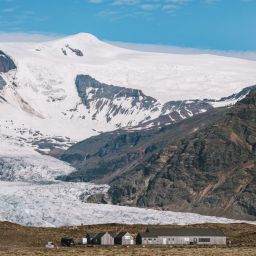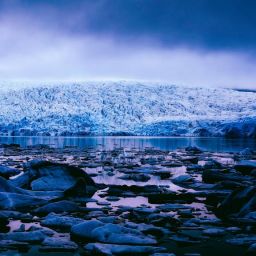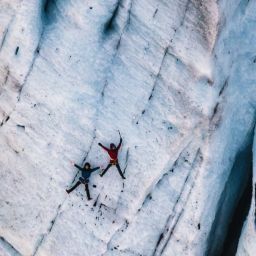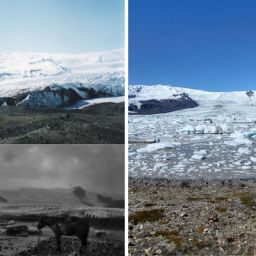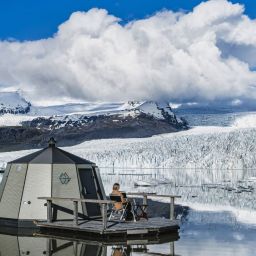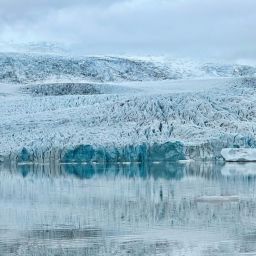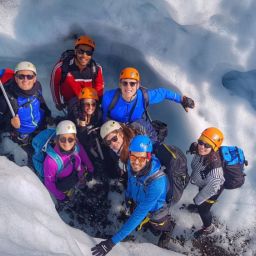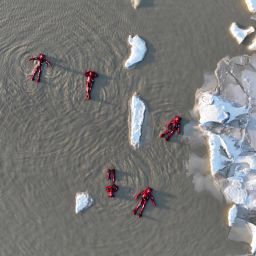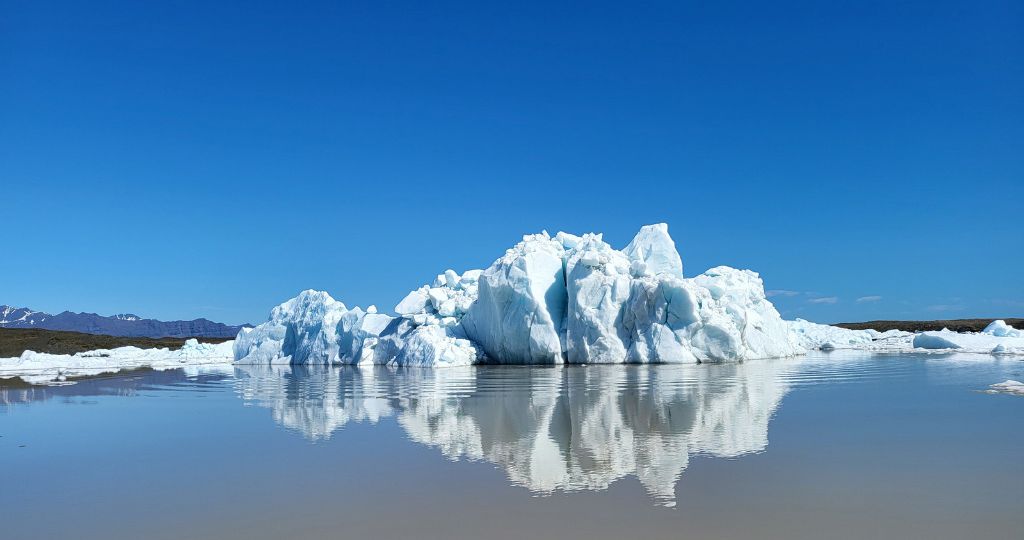
Icebergs are a big part of what attracts visitors to Fjallsárlón. These floating chunks of ice take on various sizes, shapes and forms. Close up, on one of our boat trips, you’ll see that they’re not uniform in colour either; some are a translucent shade of turquoise, while others are streaked with black ash. But have you ever wondered where they came from and how they got there? In this piece we’ll take a look at the life cycle of an iceberg in Fjallsárlón and find out.
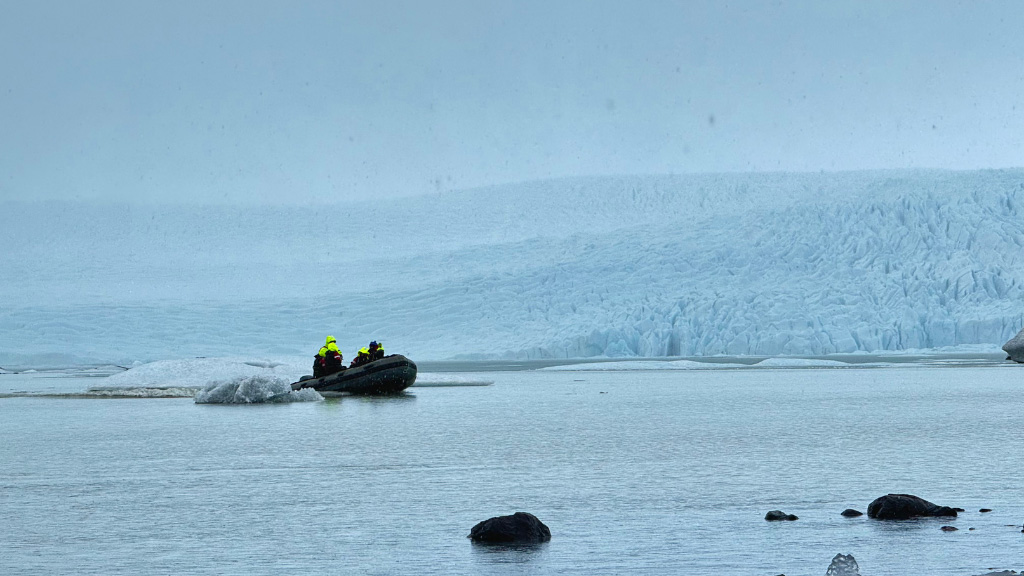
A zodiac boat tour on the Fjallsárlón glacier lagoon in snowfall. Snowfall is of course a crucial part of a glaciers, and icebergs, existence.
It starts with a snowfall
Dips and hollows high up on the mountainside allow snow to collect. Over time, the weight of new snowfalls causes the underlying layers to compact. This turns the powder to a substance called firn. This well-bonded type of snow has been there at least a year and is much firmer than the current season’s precipitation. Over many more years, so long as the rate of snowfalls exceeds the rate of summer melting, the firn becomes ice. The result is a glacier, which is a permanent feature on the highland valley landscape.
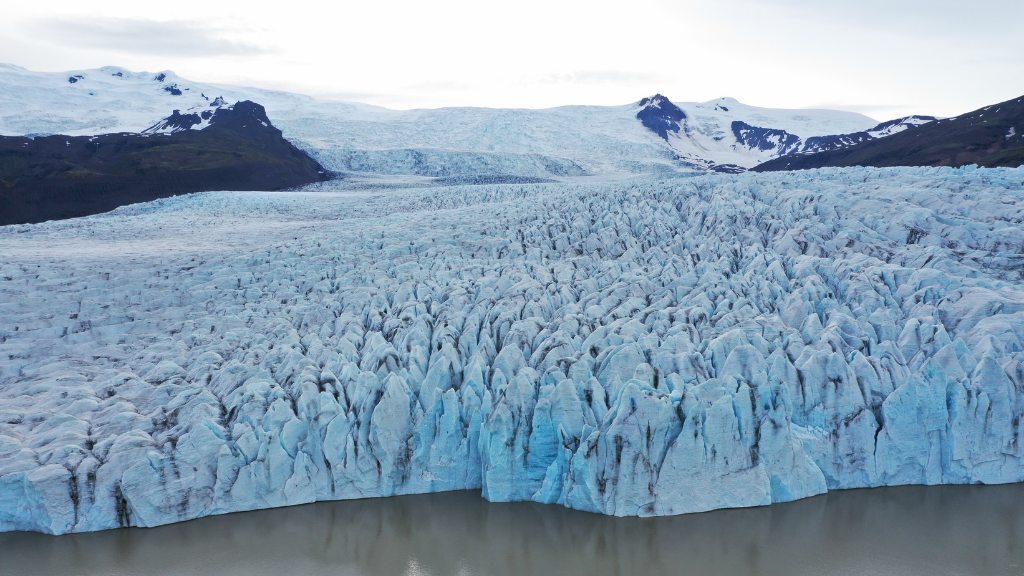
Fjallsjökull glacier is an outlet glacier that crawls slowly down from Vatnajökull glacier.
Glaciers aren’t stationary
From a distance, the solidity of a glacier makes it look like it is completely stationary. In fact, this massive tongue of ice creeps slowly downhill under the influence of gravity. Friction between the base of the ice and the valley floor beneath it means that the bottom of the glacier melts slightly; this in turn lubricates it and helps it slide over boulders and ridges. From time to time, the ice freezes around such rocks but as it keeps moving downhill it doesn’t loosen its grip – we call this process plucking.
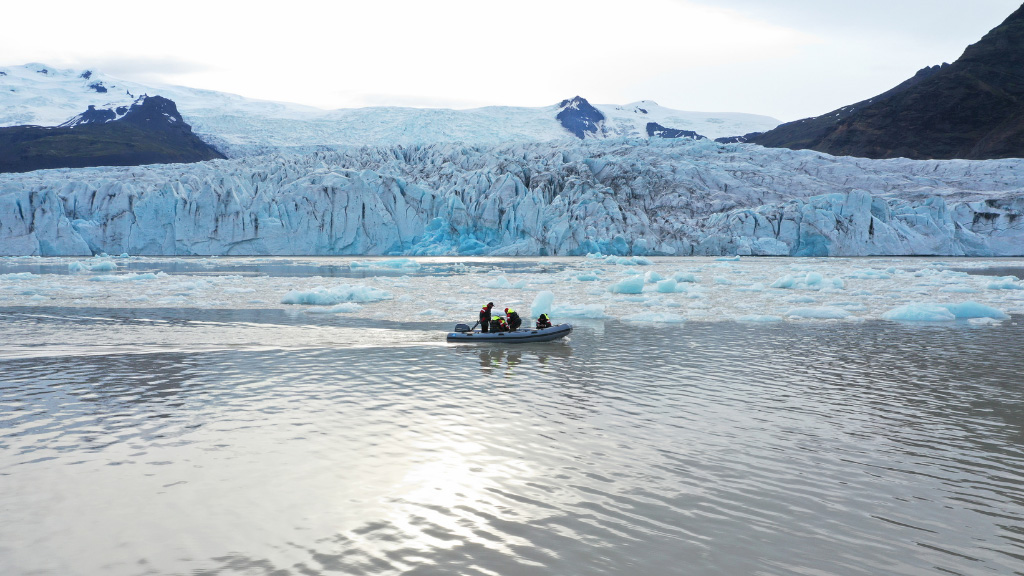
Guests on a zodiac boat tour exploring the fresh icebergs that have just broken of from the glaciers edge.
The ice meets the lagoon
As temperatures in Iceland have been on a warming trend for decades, the ice at lower elevations has melted away causing the glaciers to retreat. The weight of the glacier once eroded a hollow beyond what’s now its snout, leaving a place where such meltwater can collect. It’s because of this we have lagoons like Fjallsárlón. Where the glacier reaches this lake, icebergs calve off the end of it.
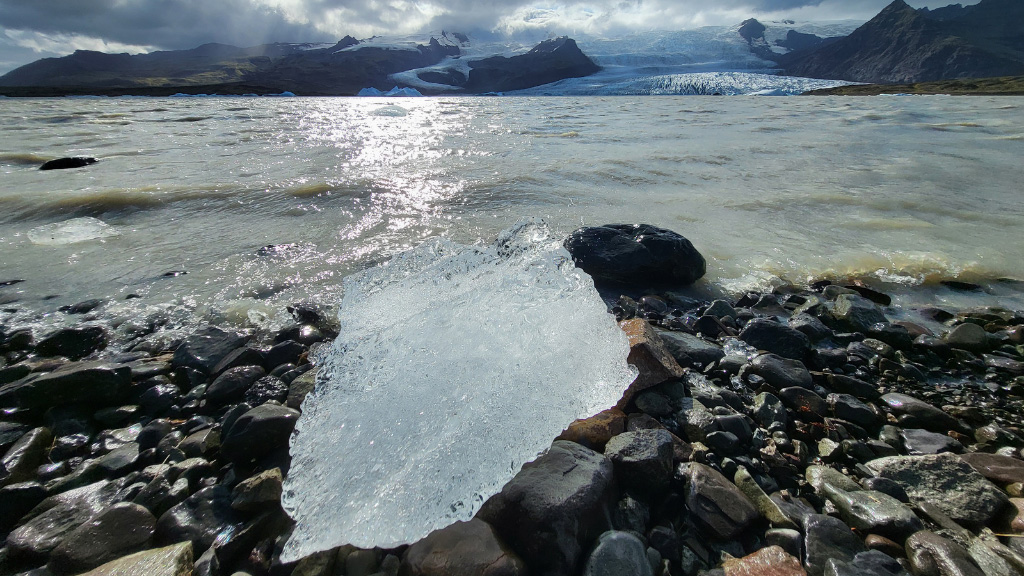
The icebergs float around the Fjallsárlón glacier lagoon until they eventually melt and the water runs down Fjallsá river to the sea.
Icebergs don’t last forever
After the icebergs crash into the water, they settle and float. The majority of the ice is hidden beneath the surface of the lagoon, so what you see is only a fraction of each. In some of Iceland’s glacier lagoons, such as neighbouring Jökulsárlón, a channel of water connects the lake to the sea and so icebergs float along this with the tide.

When the glacier is melting at its fasted rate, Fjallsárlón often gets almost filled up with floating icebergs.
However at Fjallsárlón, the channel is Fjallsá river, where the mouth of the river is not wide enough, or deep enough, for the larger icebergs to float down with the stream. Meaning the icebergs remain on the lake until they eventually melt. How long it takes for this to happen depends on how large the chunk of ice is when it calves, the ambient air temperatures and how warm the water is. As you can imagine, this is very different from one season to the next.
So enjoy these icebergs while you can, and remember that for this reason, no two visits to Fjallsárlón will ever be alike. It’s a good excuse to come more than once during your trip, or plan a revisit if you’re returning for another vacation. Bring your camera: you’ll want to record those all important details while you admire the icebergs and their delightfully photogenic backdrop.


